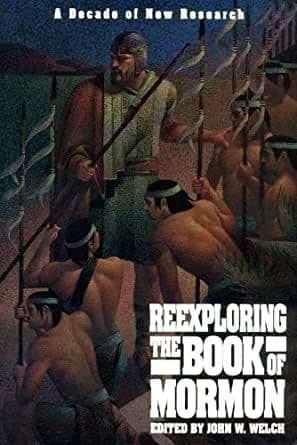Book
85 Chapters

Omni 1:20 “There was a large stone brought unto him with engravings on it.”
The Book of Mormon reports the fact that inhabitants of ancient America other than Nephites left stone inscriptions. Particularly, when the Nephites joined the Mulekites in the city of Zarahemla about 200 B.C., a large engraved stone was brought to King Mosiah that merited special mention in the Nephite records (see Omni 1:20). Presumably this was part of a tradition of stone-monument erection, not a lone case.
Many ancient American monuments continue to baffle archaeologists and linguists. It seems, however, that with increasing frequency the press trumpets with great certitude some “new archaeological discovery,” particularly in the Americas. These typically brief reports stem from press releases by discoverers acting on the modern rule that the one who gets the most publicity likely will get funding. A word of general explanation and reflection about such claims is in order.
The general problem with “latest discovery” press releases is that those who issue them can say what they wish. Only when fuller reports are made can other scholars formulate adequate critiques of the purported finds. Thus when a F.A.R.M.S. reader asks what we think about this or that newspaper or magazine report—especially as it may bear on the Book of Mormon—the answer usually has to be that no responsible person will know what to think for perhaps years. Short of that, speculation based on inadequate information could mislead. Hence, patience!
For example, in the spring of 1988, the Associated Press and New York Times, among other outlets, reported the discovery of a stone slab from the state of Veracruz in Mexico. It contained “inscriptions in an unknown language,” supposedly by some “mysterious people.” (The actual discovery was in 1986.) Aside from the extravagant journalistic language employed (“fertility-rite,” “crocodiles infest the region,” “fierce-looking bearded man”), there are outright errors in the report (e.g., “previously unknown system of hieroglyphics”). Actually, the glyphs on the new find are in the same system used on the Tuxtla Statuette, first published in 1907,1 which is related to other finds analyzed at length in a 1987 article by S. Méluzin.2
The Veracruz find indeed promises to be of major importance because of the length of its text (577 characters), its date (second century A.D.), and its location (in or near what many Latter-day Saints believe to have been a Nephite land at that time). But what is actually to be made of it must await careful studies and publications by experts like Méluzin.
Some finds can be put into better context than others, even with limited information. For example, reports a few months ago about “ten-story high” temples in Peru that may date to 3000 B.C. or before would not be wholly without basis. G. Engel in Peru and Ecuadorean and North American archaeologists on Ecuador’s north coast have made previous lesser finds of that period.
Similarly, the “jungle-shrouded city” of Nakbe in northern Guatemala that Richard Hansen (a BYU graduate now at UCLA) and Don Forsyth (BYU professor) reported in the press in September 1989 could date as early as the sixth and fifth centuries B.C. and indeed could “push the beginning of Maya civilization back further into the past.” But it is by no means “one of the oldest in the Americas,” based on comparison with substantially earlier non-Maya sites in Mexico, Ecuador, and Peru, some of which would have to be considered seeds for what happened at later Nakbe.
Most recently, “explorer” Gene Savoy has reported finding inscribed slabs in caves in Peru on which are “Hebrew-like” characters that may date to the time of King Solomon. Savoy’s claims of major discoveries some years ago have never been adequately reported to the scientific community for evaluation. So it may be a long time before informed judgment can be rendered on these inscriptions known to the world so far only from photographs exhibited at a press conference.
This is an interesting time, when information about ancient American civilizations is expanding notably. If the latest finds prove genuine, we should learn all we can about them. Meanwhile, patience and restrained comment are called for.
Based on research by John L. Sorenson, January 1990. For further information about writing in ancient Mesoamerica, see the discussion and references in John L. Sorenson, “The Book of Mormon as a Mesoamerican Codex” (Provo: F.A.R.M.S. Reprint, 1976); “Digging into the Book of Mormon,” Ensign 14 (September 1984): 26-37, and (October 1984): 12-23; and John L. Sorenson, An Ancient American Setting for the Book of Mormon (Salt Lake City: Deseret Book and F.A.R.M.S., 1985).
1. William H. Holmes, “On a Nephrite Statuette from San Andres Tuxtla, Vera Cruz, Mexico,” American Anthropologist 9 (1907): 691-701.
2. “The Tuxtla Statuette: An Internal Analysis of Its Writing System,” in Gary Pahl, ed., The Periphery of the Southeastern Classic Maya Realm, (Los Angeles: UCLA Latin American Center, 1987), 67-113.
Book
85 Chapters
Items in the BMC Archive are made publicly available for non-commercial, private use. Inclusion within the BMC Archive does not imply endorsement. Items do not represent the official views of The Church of Jesus Christ of Latter-day Saints or of Book of Mormon Central.